
Sigiriya: The Lion's Rock Fortress of Sri Lanka
Discover Sigiriya, the Lion's Rock Fortress in Sri Lanka, a UNESCO World Heritage Site offering stunning views, ancient gardens, and nearby attractions like Dambulla Cave Temple and Minneriya National Park.
Sigiriya, also known as the Lion's Rock, is an ancient rock fortress located in the heart of Sri Lanka. This UNESCO World Heritage Site offers breathtaking views and a deep dive into the island's rich history. The fortress sits atop a 200-meter-high rock plateau, rising dramatically from the green jungle below. The climb to the top might be challenging, but the panoramic vistas and the ruins of the once-magnificent palace make it well worth the effort. Sigiriya is not just about its stunning rock fortress. The surrounding area is a treasure trove of history and natural beauty. The ancient gardens, which include water gardens, cave and boulder gardens, and terraced gardens, are a testament to the advanced hydraulic technology of ancient Sri Lanka. These gardens provide a serene atmosphere, perfect for leisurely walks and photography. Apart from the historical aspects, Sigiriya is also a great base for exploring other nearby attractions. The Dambulla Cave Temple, another UNESCO World Heritage Site, is just a short drive away. Here, you can marvel at the intricate cave paintings and statues that date back to the 1st century BC. For wildlife enthusiasts, the Minneriya National Park offers the chance to see elephants in their natural habitat. Whether you're a history buff, a nature lover, or an adventure seeker, Sigiriya has something to offer for everyone.
Local tips in Sigiriya
- Visit early in the morning or late afternoon to avoid the heat and crowds when climbing the rock fortress.
- Wear comfortable shoes and carry water, as the climb can be strenuous.
- Hire a local guide to gain deeper insights into the history and significance of Sigiriya.
- Take some time to explore the surrounding gardens; they are often overlooked but are equally fascinating.
- Combine your visit with a trip to nearby attractions like the Dambulla Cave Temple and Minneriya National Park.
Sigiriya: The Lion's Rock Fortress of Sri Lanka
Sigiriya, also known as the Lion's Rock, is an ancient rock fortress located in the heart of Sri Lanka. This UNESCO World Heritage Site offers breathtaking views and a deep dive into the island's rich history. The fortress sits atop a 200-meter-high rock plateau, rising dramatically from the green jungle below. The climb to the top might be challenging, but the panoramic vistas and the ruins of the once-magnificent palace make it well worth the effort. Sigiriya is not just about its stunning rock fortress. The surrounding area is a treasure trove of history and natural beauty. The ancient gardens, which include water gardens, cave and boulder gardens, and terraced gardens, are a testament to the advanced hydraulic technology of ancient Sri Lanka. These gardens provide a serene atmosphere, perfect for leisurely walks and photography. Apart from the historical aspects, Sigiriya is also a great base for exploring other nearby attractions. The Dambulla Cave Temple, another UNESCO World Heritage Site, is just a short drive away. Here, you can marvel at the intricate cave paintings and statues that date back to the 1st century BC. For wildlife enthusiasts, the Minneriya National Park offers the chance to see elephants in their natural habitat. Whether you're a history buff, a nature lover, or an adventure seeker, Sigiriya has something to offer for everyone.
When is the best time to go to Sigiriya?
Iconic landmarks you can’t miss
Dambulla Royal Cave Temple and Golden Temple
Explore the Dambulla Royal Cave Temple, a UNESCO World Heritage site showcasing stunning Buddhist art and breathtaking views in Sri Lanka.

Pidurangala Rock
Discover the breathtaking views and rich history of Pidurangala Rock near Sigiriya, a must-visit destination in Sri Lanka for every traveler.
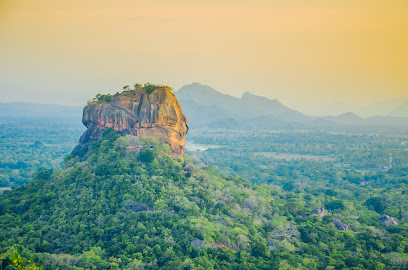
Sigiriya Village Hotel
Discover the charm of Sigiriya Village Hotel, where comfort and culture meet near the breathtaking Sigiriya Rock Fortress.

Minneriya National Park
Explore the majestic beauty and wildlife wonders of Minneriya National Park, a premier destination for nature lovers in Sri Lanka.

SigiriyaJungles
Discover the serene beauty and rich history of Sri Lanka at SigiriyaJungles Hotel, your perfect retreat near Sigiriya Rock Fortress.

Sigiriya Fortress - Ticket Counter (For Locals)
Discover the breathtaking Sigiriya Fortress, a UNESCO World Heritage Site showcasing ancient Sri Lankan history, stunning architecture, and panoramic views.

Sigiriya Lion Rock
Experience the breathtaking beauty and rich history of Sigiriya Lion Rock, a UNESCO World Heritage site in the heart of Sri Lanka.

Water Garden Sigiriya
Experience luxury and tranquility at Water Garden Sigiriya, where nature meets elegance in the heart of Sri Lanka's stunning landscapes.

Archaeological Museum - Sigiriya
Explore the Archaeological Museum in Sigiriya for a deeper understanding of Sri Lanka's ancient history and rich cultural heritage.

EKHO Sigiriya
Experience luxury and history at EKHO Sigiriya, your gateway to the majestic Sigiriya Rock and serene Sri Lankan landscapes.

Sigiriya palace
Explore Sigiriya Palace, a UNESCO World Heritage Site, and marvel at the ancient rock fortress and its breathtaking views in Sri Lanka.

Ibbankatuwa Megalithic Tombs
Unveil the mysteries of ancient Sri Lanka at the Ibbankatuwa Megalithic Tombs – a must-visit historical site near Dambulla.
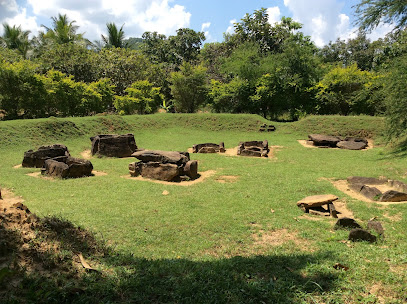
Pidurangala Rock Temple Ticket Office (LKR.1000.00 per tourists person)
Discover the serene beauty and historical significance of Pidurangala Rock Temple, a must-visit destination in Sri Lanka offering stunning views and rich culture.

Pidurangala Royal Cave Temple
Discover the serene beauty and rich history of Pidurangala Royal Cave Temple, a hidden gem near Sigiriya, perfect for spiritual seekers and nature lovers alike.

Royal Rock Sigiriya
Discover luxury and adventure at Royal Rock Sigiriya, your gateway to the enchanting landscapes and heritage of Sri Lanka.

Unmissable attractions to see
Dambulla Royal Cave Temple and Golden Temple
Discover the spiritual heart of Sri Lanka at Dambulla Royal Cave Temple, a treasure trove of art and history nestled in stunning landscapes.

Pidurangala Rock
Explore the breathtaking Pidurangala Rock near Sigiriya, a historical landmark offering stunning views and rich cultural heritage.

Uththararamaya (Gal Vihara)
Explore the serenity and artistry of Uththararamaya, a historical Buddhist temple in Nissankamallapura, rich in culture and spirituality.

Dalada Maluva - ( Polonnaruwa)
Explore the sacred Dalada Maluva in Polonnaruwa, a historical landmark that embodies Sri Lanka's rich Buddhist heritage and architectural beauty.

Pitawala Pathana, Riverston
Explore the breathtaking landscapes and vibrant biodiversity at Pitawala Pathana, Riverston, a serene ecological park in the heart of Sri Lanka.

Nalanda Gedige (Central point of Sri Lanka)
Explore Nalanda Gedige, a historical landmark in Matale, where Buddhist and Hindu traditions converge in stunning architectural beauty.

Sera Ella Water Fall
Explore the enchanting Sera Ella Waterfall in Illukkumbura, a scenic haven for nature enthusiasts and adventure seekers alike.

Minneriya National Park
Explore Minneriya National Park, a wildlife oasis in Sri Lanka, known for its majestic elephants and vibrant ecosystems, ideal for adventure and photography.
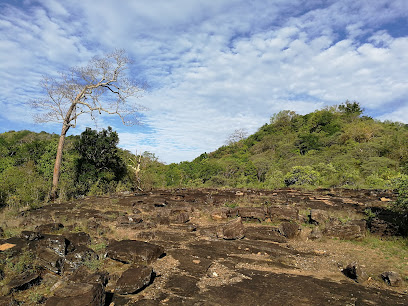
Wasgamuwa National Park
Discover the rich biodiversity and stunning landscapes of Wasgamuwa National Park, a top destination for wildlife and nature enthusiasts in Sri Lanka.

Vatadage
Explore Vatadage, a mesmerizing historical landmark in Polonnaruwa, showcasing exquisite ancient architecture and rich Buddhist heritage.

Dimbulagala Aranya Senasanaya ( Dimbulagala Forest Monastery )
Discover tranquility at Dimbulagala Aranya Senasanaya, a serene Buddhist monastery surrounded by breathtaking landscapes in Sri Lanka.

Ranweli Spice Garden
Explore the aromatic world of Ranweli Spice Garden in Kawudupelella, a sensory journey through Sri Lanka's rich spice heritage.
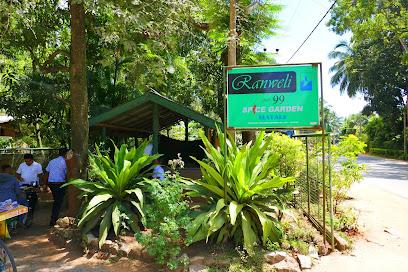
Kala Wewa
Explore the serene waters and historical depths of Kala Wewa, a picturesque reservoir in Sri Lanka perfect for nature lovers and adventure seekers.

Archaeological Museum - Sigiriya
Uncover the ancient history of Sri Lanka at the Archaeological Museum in Sigiriya, where captivating artifacts and rich narratives await.
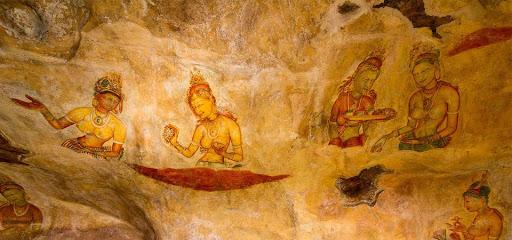
Thivanka Image House
Discover the cultural heritage and architectural beauty of Thivanka Image House, a historic gem in the heart of Polonnaruwa, Sri Lanka.

Essential places to dine
Sigiriya Wew Thawulla Restaurant
Experience authentic Sri Lankan flavors at Sigiriya Wew Thawulla Restaurant near the breathtaking Sigiriya Rock Fortress.
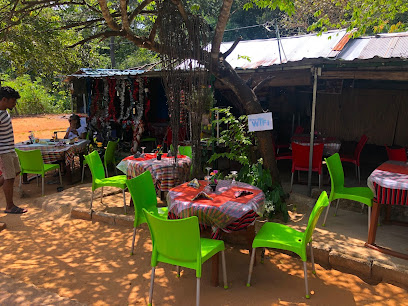
Rastarant Sigiriya
Discover the flavors of Sri Lanka at Rastarant Sigiriya - where culinary excellence meets breathtaking views near Sigiriya Rock.

Kenoli Restaurant
Experience authentic Sri Lankan cuisine at Kenoli Restaurant in Sigiriya - where every dish is a celebration of local flavors.

Little hut sigiriya
Discover authentic Sri Lankan flavors at Little Hut in Sigiriya, where every meal offers breathtaking views and warm hospitality.

Ahinsa Restaurant
Discover authentic Sri Lankan flavors at Ahinsa Restaurant in Sigiriya - where delicious meals meet serene surroundings.

Wijesiri Family Restaurant
Discover authentic Sri Lankan flavors at Wijesiri Family Restaurant in Sigiriya – a culinary haven for travelers seeking local delights.

Liya Restaurant
Experience exquisite Asian cuisine at Liya Restaurant in Sigiriya amidst breathtaking landscapes and warm local hospitality.

cappuccino bistro.
Discover the perfect blend of flavor and relaxation at Cappuccino Bistro in Sigiriya - where exceptional coffee meets delightful cuisine.

Chooti Restaurant Sigiriya
Experience authentic Sri Lankan cuisine at Chooti Restaurant Sigiriya - an affordable gem near iconic landmarks.

Shenadi restaurant
Experience authentic Sri Lankan cuisine at Shenadi Restaurant in Sigiriya – where delicious flavors meet warm hospitality.

Mili's Restaurant
Discover authentic Sri Lankan flavors at Mili's Restaurant in Sigiriya—where every dish tells a story.

Gamagedara Village Foods
Experience authentic Sri Lankan cuisine at Gamagedara Village Foods in Sigiriya – where every meal tells a story.

La Dolce Vita
Discover La Dolce Vita in Sigiriya—where local flavors meet global cuisine in a cozy atmosphere perfect for every traveler.

Soul Food
Discover delightful vegetarian cuisine at Soul Food in Sigiriya – where every meal is a celebration of local flavors and fresh ingredients.

68.Sigiriya
Experience authentic Asian cuisine in Sigiriya amidst stunning landscapes and rich cultural heritage.
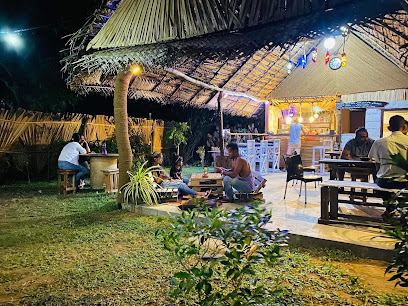
Markets, malls and hidden boutiques
Sigiriya Fortress - Ticket Counter (For Locals)
Experience the breathtaking beauty and historical significance of Sigiriya Fortress, a UNESCO World Heritage Site in Sri Lanka.

Espresso Italiano
Discover the rich flavors of Sri Lanka at Espresso Italiano, the perfect coffee retreat in Sigiriya for every traveler.

Chocolate.lk
Discover the exquisite world of artisanal chocolates at Chocolate.lk, where every bite is a celebration of flavor and craftsmanship.

Sigiri Art Gallery
Discover the vibrant artistry and exquisite handicrafts at Sigiri Art Gallery in Sigiriya, a treasure trove of local culture and creativity.

Bunny.srilanka
Explore Bunny.srilanka for unique clothing that blends local culture with contemporary fashion in the heart of Sri Lanka.

Wood Carving Work Shop
Explore the artistry of wood carvings in Sigiriya, where tradition meets craftsmanship in stunning handmade pieces.

සැනසුම ස්ටෝර්ස් රදනිආර Para
Explore the vibrant Sanasuma Stores in Dambulla for a taste of local culture and a wide selection of culinary delights.

Lanka Souvenirs
Explore Lanka Souvenirs for authentic Sri Lankan crafts and unique gifts that capture the essence of this beautiful island.

තිසේරා මුරුක්කු Factory
Explore the Tiserra Murukku Factory in Dambulla, where the essence of Sri Lankan spices and delicious traditional snacks come to life.

Nilini cafe
Discover the sweet side of Sigiriya at Nilini Cafe, a delightful cake shop nestled near the iconic Sigiriya Rock Fortress.

Priya
Experience Dambulla like a local at Priya, your go-to grocery store for authentic Sri Lankan flavors and fresh produce.

Raj talkies Sri Lanka
Explore the heart of Dambulla at Raj Talkies, a hub of local culture and craftsmanship in Sri Lanka.

Sujan Sujee
Explore the literary treasures of Sujan Sujee in Dambulla, a captivating book store offering a unique insight into Sri Lankan culture and literature.

Kundan
Explore Kundan in Dambulla for unique handcrafted souvenirs and authentic local products that highlight Sri Lankan culture.

Amal Dinusha
Discover the vibrant shopping experience at Amal Dinusha in Dambulla, where local culture meets unique craftsmanship and everyday essentials.

Essential bars & hidden hideouts
Sigiriya Wew Thawulla Restaurant
Experience authentic Sri Lankan cuisine at Sigiriya Wew Thawulla Restaurant, a culinary treasure near the iconic Sigiriya Rock Fortress.

Rastarant Sigiriya
Discover the vibrant flavors of Sri Lankan cuisine at Rastarant Sigiriya, where every meal is a celebration of local culture and taste.

cappuccino bistro.
Discover Cappuccino Bistro in Sigiriya, a delightful cafe offering exceptional coffee, delicious food, and a cozy atmosphere perfect for relaxation.

The Downtown Gastropub
Experience the perfect blend of traditional Sri Lankan and modern cuisine at The Downtown Gastropub in Sigiriya, where every meal is a celebration of flavor.

La Dolce Vita
Discover La Dolce Vita in Sigiriya - a vibrant bar and restaurant offering a menu filled with local and international delights, perfect for all dining occasions.

68.Sigiriya
Experience the flavors of Asia in the heart of Sigiriya, where every dish tells a story and every meal is a celebration.

Coconut Shades Restaurant Sigiriya
Discover the authentic taste of Sri Lanka at Coconut Shades Restaurant in Sigiriya, where culinary delights meet breathtaking views.

Sigiriya Cool Place
Experience the essence of Sri Lankan cuisine amidst the breathtaking backdrop of Sigiriya's iconic rock fortress at Sigiriya Cool Place.

ROCKO'S RESTAURANT &CAFE, SIGIRIYA
Discover culinary delights at Rocko's Restaurant & Cafe in Sigiriya, where local flavors meet stunning views near the iconic rock fortress.

The Tea Bar Sigiriya
Experience the essence of Sri Lanka at The Tea Bar Sigiriya, where exquisite teas and local flavors create a perfect retreat amidst lush landscapes.

Ranithu Restaurant
Experience authentic Sri Lankan flavors at Ranithu Restaurant, a must-visit culinary gem near Sigiriya, perfect for travelers seeking taste and ambiance.

One More Bite Burgers
Experience the ultimate burger haven in Sigiriya with gourmet flavors and a lively atmosphere at One More Bite Burgers.

Gamiya Chill Cafe
Discover the serene Gamiya Chill Cafe in Sigiriya, where authentic Asian cuisine meets a tranquil atmosphere, perfect for relaxing after sightseeing.

Island Vibes Lounge
Discover the bohemian charm of Island Vibes Lounge in Sigiriya, where delicious food and refreshing cocktails create a tropical escape.

Gala Addara Cafe Sigiriya
Experience the authentic taste of Sri Lanka at Gala Addara Cafe Sigiriya, where local flavors and warm hospitality converge.

Local Phrases
-
- Helloආයුබෝවන්
[ayubowan] - Goodbyeසමගාවේ
[samagawe] - Yesඔව්
[ow] - Noනෑ
[nae] - Please/You're welcomeකරන්න/අපි කියලා
[karanna/api kiyala] - Thank youඔබට ස්තූතියි
[obata sthuthiyi] - Excuse me/Sorryකියලා දැන්නා/සපුරා
[kiyala dannaa/sapura] - How are you?ඔබ කොහොමද?
[oba kohomada?] - Fine. And you?හොදයි. ඔබ?
[hodayi. oba?] - Do you speak English?ඔබට ඉංග්රීසි කතා කරයිද?
[obata ingreesi katha karayi da?] - I don't understandමම දැන් නොදැනෙනවි
[mama dannae nodannevi]
- Helloආයුබෝවන්
-
- I'd like to see the menu, pleaseකරුණාකොළ බලන්න
[karunakola balanna] - I don't eat meatමස් නැවතියි
[mas nawathi] - Cheers!ආයිවක්!
[ayiwak] - I would like to pay, pleaseකරුණාකොළ ගෙවන්න
[karunakola gewanna]
- I'd like to see the menu, pleaseකරුණාකොළ බලන්න
-
- Help!උක්කථනා!
[ukkathana!] - Go away!පිටවන්න!
[pitawanna!] - Call the Police!පොලිස් කරන්න!
[polis karanna!] - Call a doctor!වෛර කරන්න!
[vaira karanna!] - I'm lostමම අභිබචවෙනවි
[mama abhibechwenavi] - I'm illමම අස්තියවෙනවි
[mama asthiyawenavi]
- Help!උක්කථනා!
-
- I'd like to buy...මම ... මිලදී ගෙනා
[mama ... miladi gena] - I'm just lookingමම පෙනුවනවා
[mama penuvanava] - How much is it?එය කොහොමද?
[eya kohomada?] - That's too expensiveඑය ඉතාම පිරිස්සුද
[eya itama pirisuda] - Can you lower the price?මිල අඩු කරන්න ක්රයාත්මයක් තියාගන්න
[mila adu karanna krayathmaya tiyaganna]
- I'd like to buy...මම ... මිලදී ගෙනා
-
- What time is it?එයට කොහොම වේදිකාව යොදවුද?
[eyata kohom vediya yodavada?] - It's one o'clockඑය එක පැයට වේදිකාවයි
[eya eka payata vediya] - Half past (10)දහයි පැයට (දසු)
[dahayi payata (dasu)] - Morningපෙරවදා
[perawada] - Afternoonප.ව.
[p.w.] - Eveningස.ව.
[s.w.] - Yesterdayඊයේ
[iyee] - Todayඅද
[ada] - Tomorrowහෙට
[heta] - 1එක
[eka] - 2දෙක
[deka] - 3තුන
[thuna] - 4හතර
[hathara] - 5පහ
[paha] - 6හය
[haya] - 7හත
[hatha] - 8අශෝල්
[ashol] - 9නවය
[navaya] - 10දහයි
[dahayi]
- What time is it?එයට කොහොම වේදිකාව යොදවුද?
-
- Where's a/the...?... කොහොමද?
[... kohomada?] - What's the address?ලිපිනය කුමක්ද?
[lipinaya kumakda?] - Can you show me (on the map)?මාප් එකෙන් පෙන්වන්නක?
[map eken penwanak?] - When's the next (bus)?ඊළඟට දිනව්?
[elagata dinawa?] - A ticket (to ....)ටිකට් (විදුලියට)
[ticket (viduliyata)]
- Where's a/the...?... කොහොමද?
History of Sigiriya
-
Sigiriya's history dates back to prehistoric times, with evidence suggesting that the area was inhabited nearly 5,000 years ago. Archaeological excavations have uncovered tools, pottery shards, and other artifacts that point to an early human presence. The natural rock shelters and caves in the region were likely used by these early inhabitants for protection and as living quarters.
-
The most iconic chapter in Sigiriya's history is undoubtedly the reign of King Kashyapa I (477-495 CE). After seizing the throne from his father, King Dhatusena, Kashyapa moved the capital from Anuradhapura to Sigiriya. He transformed the rock into an elaborate fortress and palace complex, complete with lush gardens, moats, and elaborate frescoes. The rock summit housed the royal residence, creating a nearly impregnable stronghold.
-
One of the most striking features of Sigiriya is the Lion Rock. The entrance to the palace was designed to resemble a massive lion, with the paws still visible today. The lion's head, however, has not survived the test of time. This architectural marvel served both as a symbol of royal power and as a formidable defensive structure, deterring potential invaders.
-
Sigiriya is renowned for its ancient frescoes, which adorn the western face of the rock. These vibrant paintings, depicting celestial maidens known as 'Apsaras,' are a testament to the artistic skills of the period. The frescoes are considered masterpieces of ancient Sri Lankan art, showcasing intricate details and vibrant colors that have survived for over a millennium.
-
Another remarkable aspect of Sigiriya is its advanced hydraulic engineering. The water gardens, located at the base of the rock, are a complex system of pools, fountains, and channels that were designed to enhance the beauty and utility of the royal gardens. These gardens are among the oldest landscaped gardens in the world, reflecting sophisticated engineering and an understanding of water management that was ahead of its time.
-
After the death of King Kashyapa in 495 CE, Sigiriya's prominence began to wane. The capital was moved back to Anuradhapura, and Sigiriya transitioned into a Buddhist monastic complex. Over the centuries, it was largely forgotten, only to be rediscovered by British archaeologists in the 19th century. Despite its decline, the ruins of Sigiriya continued to be a site of historical and cultural significance.
-
In the 19th century, British archaeologists, including H.C.P. Bell, began to uncover the secrets of Sigiriya. Their work led to a renewed interest in the site, which has since been recognized as a UNESCO World Heritage Site. Today, Sigiriya is one of Sri Lanka's most popular tourist destinations, drawing visitors from around the world to marvel at its historical and architectural wonders.
Sigiriya Essentials
-
Sigiriya is located in the Central Province of Sri Lanka, approximately 170 kilometers northeast of Colombo. The nearest international airport is Bandaranaike International Airport in Colombo. From the airport, you can take a taxi or a private car hire to Sigiriya, which typically takes around 4 to 5 hours by road. Alternatively, you can take a train from Colombo to Habarana, the nearest railway station to Sigiriya, and then a taxi or tuk-tuk for the remaining 15 kilometers.
-
Sigiriya is a small village, and many attractions are within walking distance. For longer trips, local taxis and tuk-tuks are readily available and relatively inexpensive. Public buses operate within the region and connect to nearby towns such as Dambulla and Habarana. Renting a bicycle or a scooter is also a popular option for exploring the area at your own pace.
-
The official currency in Sri Lanka is the Sri Lankan Rupee (LKR). Credit cards are accepted in some hotels, restaurants, and shops, but it is advisable to carry cash, especially in smaller establishments. ATMs are available in nearby towns like Dambulla, so it is wise to withdraw sufficient cash before heading to Sigiriya.
-
Sigiriya is generally a safe destination for tourists. However, it is advisable to take standard precautions such as avoiding walking alone at night in unfamiliar areas and keeping an eye on your belongings in crowded places. There are no specific high-crime areas targeting tourists, but it is always best to stay vigilant and aware of your surroundings.
-
In case of emergency, dial 119 for immediate assistance. The local police station and medical facilities are available in nearby Dambulla. It is recommended to have travel insurance that covers medical emergencies. For minor health issues, there are pharmacies in the area where you can purchase over-the-counter medications.
-
Fashion: Do dress modestly, especially when visiting religious sites. Avoid wearing revealing clothing. Religion: Do respect local customs and traditions. Always remove your shoes and cover your head when entering temples. Public Transport: Do be respectful and give up your seat to elderly passengers. Don't eat or drink on public transport. Greetings: Do greet people with a smile and a slight bow of the head. A handshake is also acceptable. Eating & Drinking: Do try local delicacies and accept food offerings graciously. Don't refuse hospitality, as it is considered impolite.
-
To experience Sigiriya like a local, visit the local markets where you can buy fresh produce and traditional Sri Lankan goods. Engage with locals, as they are often friendly and willing to share stories about the area's history and culture. Don't miss visiting the Sigiriya Rock Fortress early in the morning to avoid the crowds and heat. For a unique experience, take a hot air balloon ride over the area for breathtaking views of the landscape.
Trending Landmark in Sigiriya
-
Dambulla Royal Cave Temple and Golden Temple
-
Pidurangala Rock
-
Sigiriya Village Hotel
-
Minneriya National Park
-
SigiriyaJungles
-
Sigiriya Fortress - Ticket Counter (For Locals)
-
Sigiriya Lion Rock
-
Water Garden Sigiriya
-
Archaeological Museum - Sigiriya
-
EKHO Sigiriya
-
Sigiriya palace
-
Ibbankatuwa Megalithic Tombs
-
Pidurangala Rock Temple Ticket Office (LKR.1000.00 per tourists person)
-
Pidurangala Royal Cave Temple
-
Royal Rock Sigiriya
Nearby Cities to Sigiriya
-
Things To Do in Polonnaruwa
-
Things To Do in Anuradhapura
-
Things To Do in Kandy
-
Things To Do in Trincomalee
-
Things To Do in Nuwara Eliya
-
Things To Do in Ella
-
Things To Do in Negombo
-
Things To Do in Colombo
-
Things To Do in Bentota
-
Things To Do in Jaffna
-
Things To Do in Hikkaduwa
-
Things To Do in Galle
-
Things To Do in Unawatuna
-
Things To Do in Matara
-
Things To Do in Mirissa











